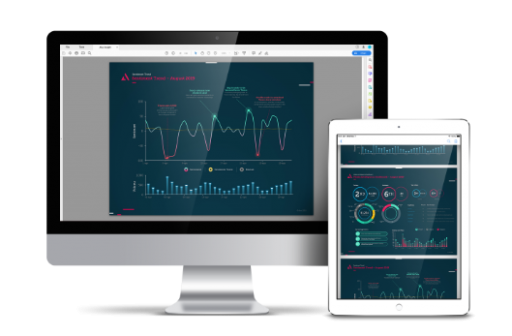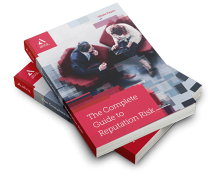The role of hyper-transparency in business
Corporations are now more exposed than ever. If an entity is acting in bad faith, the world is likely to find out at some point, whether it be via an employee whistleblowing, unsatisfied customers or a highly scrutinising media. Driven by this increase in visibility, most companies have changed the way they engage with their stakeholders, becoming more open and honest than ever. This inability to hide anything, whether good or bad, is a major feature of hyper-transparency.
That being said, what truly lies at the centre of hyper-transparency is trust. A company will only be successfully transparent if it replaces what are often opaque business practices with fully transparent ones. What this means in theory is that all stakeholders have the same information and can access that information at all times. However, businesses must be aware that by being hyper-transparent they may be opening themselves up to a new level of scrutiny, where nothing can go by unseen.
Making a change
Many companies may fear handing over power to their stakeholders – after all, by being hyper-transparent you are allowing stakeholders to have a role in any decision-making process. However, it should not be something to be feared, as we will go on to show.
Global mining group Rio Tinto is a good example of a company that has successfully utilised hyper-transparency. It had to adapt its stakeholder relations strategies in the communities in which it operated and did so in several ways. Firstly, it became a founding member of the Extractive Industry Transparency Initiative, which aims to “promote understanding of natural resource management, strengthen public and corporate governance and accountability, and provide the data to inform policymaking and multi-stakeholder dialogue in the extractive sector”. In 2018, it also signed up to the B Team Responsible Tax Principles, which supports the change of leadership to become more accountable, sustainable and equal, and last year it was one of the first companies to fully implement tax reporting disclosure requirements under the Global Reporting Initiative Tax standard GRI 207. Former Group Executive of Corporate Relations Simone Niven said Rio Tinto’s reason for becoming hyper-transparent was that “society now has much higher expectations, especially of big business, big government and institutions than in the past”.
A test of trust
Despite most companies recognising the importance of trust, it has not always been actioned. In the past, it was much easier to “sweep things under the rug” and ignore them in order to protect your company’s reputation. However, the increased visibility of hyper-transparency in recent years has led it to become a key concern for stakeholders, meaning it is no longer something that companies can ignore. This, in turn, has caused something of a siloed society with two assumed agendas: good and bad. The good organisations don’t feel a need for privacy because they have “nothing to hide”, and thus, stakeholders do not fear any secrets being leaked. The “bad” organisations feel a need for privacy because they have “something to hide” and are fearful of the transparent world.
The balancing act is something most companies struggle with today in trying to figure out how to share enough without sharing too much. If and when the public should find out about a corporate “secret” (whether this be positive or negative), it gives the company a negative connotation of secrecy, which damages the trust between the two. Privacy is becoming an unsustainable commodity to rely on, but being completely transparent isn’t a viable option, either.
Instead, companies need to be proactive and plan for the likelihood that information will emerge into the public domain, whether on their own terms or not. They can no longer afford to rely on reactive “reputation management” techniques when a negative story comes to light. The speed with which issues can now escalate means that pre-planned responses, even if never required, are now the sensible approach.
Overcoming challenges
Operating in a world of hyper-transparency is challenging and businesses must adapt to this new reality. Richard Woods, former Senior Vice President of Corporate Affairs at Capital One, shared the following: “Few businesses are prepared to operate in an environment of radical transparency, but that’s the world we’re in. Being prepared means recognising that every dimension of the company’s conduct has the potential to be challenged in some way, by somebody and in public. The goal in managing this risk is not to avoid conflict but, rather, to be prepared to answer these challenges quickly and convincingly.
“This goal is most likely to be achieved when the company acts in advance to eliminate conduct and policies that are inconsistent with its self-declared values, mission or brand promise. Managing your business in a way you feel good about when the bright light of public controversy shines on it is the best way to manage reputation risk. Most companies have within them the institutional knowledge to manage reputation risk proactively. Doing so, however, requires both institutional commitment starting at the top-of-the-house and an efficient process that can bring this knowledge to the fore.”
Hyper-transparency gives stakeholders a new context and increased influence; as a result, businesses end up being highly scrutinised. If stakeholders are not aligned with what they see, fierce activism is likely to follow.
This piece was developed from The Connecting Leader: In the Age of Hyper-Transparency, Interconnectivity and Media Anarchy, How Corporate Leaders Connect Business with Society, by Alberto Lopez Valenzuela. A link to the book can be found here.
Our Risk Intelligence mines over 400,000 global sources across 123 languages every single day. Our analysis incorporates all print, online, broadcast, social media, analyst notes, parliamentary records and stakeholder-specific channels to give the richest understanding of shifting stakeholder perceptions of your business and your competitors. To find out more, click here.
alva is pleased to share that we are now Penta Group, the world’s first comprehensive stakeholders’ solution firm. Stay in touch with us by following us on LinkedIn and on Twitter @pentagrp.
Be part of the
Stakeholder Intelligence community










